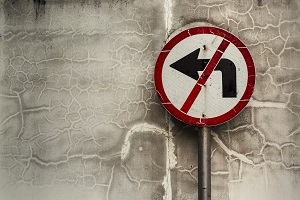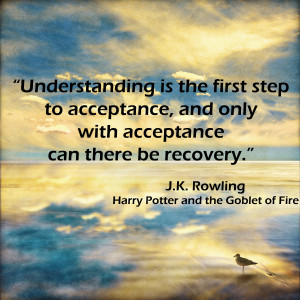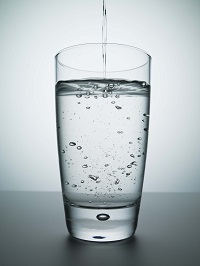As much as we are all dying for freedom and spontaneity, what we have to acknowledge is that ‘freedom’ isn’t really freedom at all. We want the option to be able to say ‘yes’ to our substance of choice whenever we want to—but what happens when we can’t say ‘no’? The ability to say ‘no’ is, too, a freedom and one that we lose when we pursue the false freedom of being able to engage in our addictive behaviors whenever we want to. There is, in fact, a trade-off. We cannot have our cake and eat it too. If you don’t have a problem with drinking, then you don’t need to worry about putting boundaries around your behavior. But if you are reading this, you are likely concerned that there may be a problem. By boundary what we actually mean is abstinence. It’s not the news you wanted to hear. You were hoping there was a way to drink and enjoy drinking like a normal person and then stop drinking when some internal trigger alerts you that you have enough. But isn’t this what you have been trying to do for months, years, or even decades?
 The 12-Step Program doesn’t set out to teach you how to live normally with alcohol, it teaches you how to live normally without it. This is the hard reality that we have to accept: we have tried to moderate our drinking and we have failed. We thought that having ‘control’ over when and how much we drank was what we wanted until we saw that we were no longer controlling alcohol—it was controlling us. It is time to give up the fight and accept that the only way to regain control of our lives is to get rid of alcohol entirely—to put a firm and unmovable fence between ourselves and drink.
The 12-Step Program doesn’t set out to teach you how to live normally with alcohol, it teaches you how to live normally without it. This is the hard reality that we have to accept: we have tried to moderate our drinking and we have failed. We thought that having ‘control’ over when and how much we drank was what we wanted until we saw that we were no longer controlling alcohol—it was controlling us. It is time to give up the fight and accept that the only way to regain control of our lives is to get rid of alcohol entirely—to put a firm and unmovable fence between ourselves and drink.
At first it seems controlling or overzealous. Are we just making too much of this whole thing? Plenty of people drink, we tell ourselves. Why do we need to be so serious about it?
So how does a boundary bring freedom? Because when you embrace sobriety, you receive your mind back. You have the power to say no. Alcohol is no longer your steamroller. And this is a freedom unlike the so-called freedom we think we had when we could drink ‘whenever we wanted.’ But there was a problem with that kind of freedom. We didn’t have the choice to not drink whenever we wanted. Alcohol was the boss. In sobriety we take our lives and our decision-making capacity out of alcohol’s hands and we reclaim it as our own.
We become free to make plans and keep them, to give our word and stick to it. We stop living in the shadows of broken promises and failed attempts and futility. When we get honest with alcohol, we get honest with ourselves and the rest of our lives and we become free.
Most of the principles of recovery contain a paradox and this concept is no different. But where has conventional wisdom or common sense ever gotten us? We have to reject the advice and the methods and the approaches that are not working for us and not serving our goal.
You have the right to be free. You have the right to be sober. You cannot imagine what that life will look like and certainly it is a little scary to think of. But what if, emotionally, you could be brought to a place of never actually needing a drink? What if life became manageable? What if you felt as good sober as you did the moment you took the first drink? Would you try it?
Watching for signs of relapse in loved ones. Read: Relapse Prevention: Signs of Relapse in Recovering Addicts
Have you ever noticed that no matter how old you are, no matter how far you’ve come in your career or how much life experience you’ve got under your belt, when your family gets together, you fall right back into old familiar patterns of relating to each other? Therapists would call these patterns of behavior “roles” – almost like the roles actors play. Every family does this to some extent, but in families that have been affected by addiction, the roles might seem like they are cast in concrete. Rigid and unchanging over decades, it seems like each child is born into their role and that’s it, forever.
Some important things to remember about these roles:
- They are not conscious choices. No parent decides, “I’m going to be a Chief Enabler” in my family. Kids don’t choose to become a Mascot or a Hero.
- The roles themselves aren’t “good” or “bad.” When growth and change is frowned upon, that is what’s bad for families. The stuckness and inability to grow beyond a role is what makes roles problematic in a family affected by addiction.
- These roles carry over into other areas of life, making intimate relationships problematic, or careers/professional relationships difficult to navigate.
- Treatment is helpful for becoming aware of these roles and how they are impacting your behavior. This is an area where therapy can be really useful and effective, and where insight can lead to making positive changes.
In prior articles, we’ve looked at the Chief Enabler and the Family Hero—two roles that are somewhat balanced in terms of having much that is positive about them and much that can be harmful or detrimental about them. These two roles are similar in that both Heroes and Enablers “over-function”—they tend to pick up the slack emotionally, financially, and in terms of physical chores. The drinker or substance abusers tend to not get to things (from dishes to bills to baseball games) because their focus is on using. The Hero and the Enabler both work hard—sometimes hard enough to make themselves physically ill—to maintain the appearance of a well-functioning family.
The Scapegoat
The Scapegoat is a very different type of role. This is the child who constantly gets in trouble, and constantly attracts negative attention. As a young child, this is the one who may be diagnosed with attention-deficit hyperactivity disorder (ADHD) or have “behavior problems” at school. Maybe a bully, or maybe just the class clown, this is the child who seems incapable of following rules or letting things be easy. For the Chief Enabler, this child is a thorn in his or her side.
Often as a teenager, the Scapegoat begins using drugs or alcohol. These children can have significant conflict with others in the family, and sibling issues between the Hero and the Scapegoat are common.
 These children are sometimes described as the “lightning rods” for the family, since they seem to attract negative consequences. They are the typical acting-out child: they act out all the anger, frustration, rage and fear that all of the family members may feel. When a parent drinks or uses drugs, that parent’s behavior can be unpredictable and frightening for children. Rules may change based upon whether the parent is drunk, hung over, or seeking a drink. Conversations that take place while the parent is under the influence might not be remembered the next day. Permission granted can be taken back, and moods can flip on a dime. The inconsistencies of the using parent’s behavior, and the covering up or “making nice” that the enabler does can also be confusing at best, and infuriating at worst. The Hero just works harder at pretending everything is fine and that the family is fine, despite all these emotions. The Scapegoat is the family member who insists the family get attention—he is the one who screams “something is wrong” and does so by being “wrong.”
These children are sometimes described as the “lightning rods” for the family, since they seem to attract negative consequences. They are the typical acting-out child: they act out all the anger, frustration, rage and fear that all of the family members may feel. When a parent drinks or uses drugs, that parent’s behavior can be unpredictable and frightening for children. Rules may change based upon whether the parent is drunk, hung over, or seeking a drink. Conversations that take place while the parent is under the influence might not be remembered the next day. Permission granted can be taken back, and moods can flip on a dime. The inconsistencies of the using parent’s behavior, and the covering up or “making nice” that the enabler does can also be confusing at best, and infuriating at worst. The Hero just works harder at pretending everything is fine and that the family is fine, despite all these emotions. The Scapegoat is the family member who insists the family get attention—he is the one who screams “something is wrong” and does so by being “wrong.”
When looked at this way, the Scapegoat is easier to understand. On the surface, the Scapegoats just seem like such screw-ups; it can be hard to feel compassion for them. They appear to be committed to making a mess of their lives, and they often appear to be uncaring about the impact their behavior has on others. However, looking at the bigger picture of the whole family, it is easier to understand those who take on this role as not only a scapegoat but also a sacrificial lamb: they sacrifice their own life, health, and happiness to get the problems in the family noticed. The messes they make are the “cry for help” that may get the real problem in the family noticed.
The big risk with the Scapegoat is that by the time he or she reaches adulthood, he or she may well have developed an addiction or legal problems, or have continued “fallout” from the messes that were made during the teenage years to such a significant degree that they have severe trouble getting started in adult life. The Scapegoat needs help more urgently and at a younger age than the Hero; not only is the risk of substance abuse higher for children in this role—the risk of suicide is higher as well.
Whenever groups of people get together—at work, in families, at the firehouse, on a sports team, or among the club members—individuals take on roles as part of interacting with each other. Someone might be the “class clown” in the room, always quick to make a joke or lighten up a situation; someone else might take on the role of “mom” and do the caretaking for the group. Roles are normal, inevitable, and in healthy situations, they help make for smooth functioning (or an easy target for gentle teasing!).
In families affected by addiction, or any family in which one or both of the parents are unable to fulfill their role as parent, there is a tendency for all family members to take on rigid and surprisingly predictable roles. In any group of children of addicts or alcoholics, ask about the roles in their families growing up and you will hear some very similar reports over and over again. In a dysfunctional family, the key difference regarding roles is that they are rigid: once you’re pegged as a Mascot or Hero, for example, you’re stuck. Behave in a way that is not in line with that role, and your entire family pressures you to get back in line. Placing a value on change, flexibility and authenticity (think of being authentic as embodying and expressing your individuality instead your role behaviors) are not typically part of dysfunctional family dynamics.
Several experts on addiction and family roles have named and described these typical roles. The names are a little different depending upon which author you’re reading: family systems therapist Virginia Satir used the terms placater, adjuster, distracter, blamer, and computer to label the different communication styles and roles family members take on. Claudia Black and Sharon Wegscheider Cruse built upon Satir’s work on communication styles and family roles, and used the names scapegoat, family mascot, hero/responsible one, and lost child to describe the different roles.
In an earlier article we discussed the role of the Chief Enabler, typically a role taken on by the addict or alcoholic’s partner. Here we’ll take a closer look at The Family Hero. This role could be taken on by any child in the family although birth order does seem to play a role with family heroes most commonly being the oldest child. The Family Hero is the child who lives the denial, devoting his or her life to proving that they are fine despite the “elephant in the living room.”
Characteristics of The Family Hero
The Family Hero is the perfect child. He or she takes on being perfect for the family as a way of proving that the addict or alcoholic’s drinking isn’t a problem. Look: I can get good grades, play a sport, and totally have my life together despite Mom or Dad’s drinking. The Family Hero crafts life to contradict the assumption by others outside the family that the drinking or drugging will affect the kids.
The children who take on the family hero role often do extremely well at whatever they take on, and are successful in the eyes of the world. They often become professionals; doctors or other healing professions are common. They often manage money well, and have very high standards for themselves and their own families.
They are often intolerant of their own emotions, and this is their Achilles heel. They need to be perfect, and they need their lives to be perfect to “undo” the imperfections they had to tolerate from early on. The problem is life is not perfect and uncontrollable things happen: accidents, being victimized, relationship problems, health issues…life tosses obstacles in our path constantly and the need to handle each one “perfectly” is a pressure family heroes place upon themselves.
Risks and Pitfalls
 This places the Family Hero at high risk for developing substance abuse problems themselves. Finding a way to cope with the tremendous internal pressures isn’t easy and all those unmet needs from childhood can crash into the adult pressures to “have it all together.” Substance abuse isn’t the only risk: eating disorders are also common among women who have filled this role in a dysfunctional family. The efforts to control the uncontrollable can easily be channeled into controlling eating and weight, and focusing on something tangible: appearance and/or weight can make the overwhelming pressures of making “everything” perfect feel more manageable. Children who have taken on the Family Hero role also seem prone to depression and anxiety, as they try so hard to make everything better than it was during their own childhood but inevitably feel as if they have failed, either due to their own dissatisfactions and old wounds, or due to the challenges and “bumps in the road” that life hands them.
This places the Family Hero at high risk for developing substance abuse problems themselves. Finding a way to cope with the tremendous internal pressures isn’t easy and all those unmet needs from childhood can crash into the adult pressures to “have it all together.” Substance abuse isn’t the only risk: eating disorders are also common among women who have filled this role in a dysfunctional family. The efforts to control the uncontrollable can easily be channeled into controlling eating and weight, and focusing on something tangible: appearance and/or weight can make the overwhelming pressures of making “everything” perfect feel more manageable. Children who have taken on the Family Hero role also seem prone to depression and anxiety, as they try so hard to make everything better than it was during their own childhood but inevitably feel as if they have failed, either due to their own dissatisfactions and old wounds, or due to the challenges and “bumps in the road” that life hands them.
How to Help
Often as an adult, the Family Hero feels like he or she needs to do everything, take on every responsibility, and be in charge of all of it. While this is understandable, since so much didn’t get done in a responsible or timely way during childhood, this inability to delegate or share responsibility, and the need to be in control of everything all the time is draining and destructive. You can see how a Family Hero could grow up to become a Chief Enabler as the roles in adulthood are rather similar.
Psychotherapy aimed at helping shed the Family Hero role can be effective. Learning to tolerate imperfection and the notion of “good enough” (as opposed to perfect) can be life changing for these people.
Part 3: Dysfunctional Family Roles: The Scapegoat Acts Out in Cry for Help
06 May 2013
The Battle Over Legalizing Marijuana Continues
Marijuana continues to be in the headlines after legalization in Washington and Colorado, Obama’s references to whether or not his administration will pursue those who violate the federal laws against its use and the latest ruling by an appeals court to reject the change in classification for the drug are top news headlines.
Despite efforts by those who believe the drug is safe for medicinal and even recreational use, the DEA believes it still has a high potential for abuse and therefore the classification that it currently has no acceptable medical use stays in place. As a result, marijuana will continue to be treated by the federal government as a drug akin to LSD and heroin.
 While those battling the drug war on the home front appear to be satisfied with the ruling, those who wish to conduct research believe their hands remain tied. According a recent ABC News report, the restrictions meant to protect the people are the very restrictions that make it difficult to perform the necessary studies to convince the DEA that the drug should be moved into a different category.
While those battling the drug war on the home front appear to be satisfied with the ruling, those who wish to conduct research believe their hands remain tied. According a recent ABC News report, the restrictions meant to protect the people are the very restrictions that make it difficult to perform the necessary studies to convince the DEA that the drug should be moved into a different category.
Essentially, the DEA wants FDA approval before removing marijuana from Schedule I classification. The research that the FDA needs completed to be able to provide approval cannot be conducted because of the current laws in place. The argument was made by the Drug Policy Alliance, suggesting that the federal government is responsible for blocking the research that needs to be completed.
While a number of studies have been completed or are underway, the biggest obstacle observed by opponents to the DEA classification is the fact that the studies must have FDA approval before they can begin. This is perceived by many to be a conflict of interest.
Read More About The Pros And Cons Of Legalizing Recreational Marijuana
15 Apr 2013
Five Commonly Abused OTC Medications
Say substance abuse and many people immediately think of illicit drugs like cocaine or heroin. With increasing media attention on the rise of prescription abuse, medications like oxycodone, Xanax, or the ADHD drug Ritalin may also come to mind. These aren’t the only types of drugs with the potential for abuse, though.
Easily obtainable drugs from the aisles of your local grocery store are also substances of abuse in the wrong hands. These drugs aren’t illegal, and they don’t require a prescription. They’re commonly referred to as “over-the-counter” (OTC) medications, and include common remedies like allergy medications, cough syrup and sleep aids. When taken in higher amounts or more frequently than the recommended dosage, they can lead to dependence and addiction –and the need for drug rehab treatment.
 Allergy Medicines
Allergy Medicines
Histamine is a natural substance that’s released when your body is exposed to allergens or some viral infections. It’s responsible for itching, sneezing, and mucus production. Antihistamines are medications used to combat these uncomfortable symptoms. Some antihistamines can be easily abused, such as diphenhydramine. This is the ingredient found in allergy medicines such as Benadryl.
Taking high doses of antihistamines can cause a “high.” Symptoms may include euphoria, drowsiness, delirium and auditory or visual hallucinations. The side effects of abuse cover a range of physical symptoms, such as sleepiness, dizziness, nausea, low blood pressure and increased heart rate.
Antihistamines don’t typically cause physical dependence. However, for some, they can create a psychological one. An addiction counselor can work with you to develop strategies for overcoming dependence on these drugs.
Cough Medicines
Dextromethorphan is a cough suppressant found in many over-the-counter cough and cold medications. Also called DXM, the ingredient is found in many familiar brand names, including Sudafed, Robitussin DM, Dayquil LiquiCaps and Vicks NyQuil. While safe when used within recommended doses, this substance is often abused by teenagers. One survey of more than 54,000 teen students suggests up to 10% have abused OTC drugs, like DXM. In high doses, a person experiences effects ranging from mild perceptual distortions to hallucinations. Some people also experience feelings of paranoia and panic.
High doses of DXM trigger serious side effects. These may include confusion, slurred speech, dizziness, double or blurred vision, loss of coordination, nausea, vomiting and abdominal pain. Chronic, heavy abuse may lead to brain damage. NMDA receptor antagonist neurotoxicity – also known as Olney’s lesions – may develop, impacting the person’s emotions, learning, and memory. DXM also interacts with other medications, including antidepressants like selective serotonin reuptake inhibitors (SSRIs) and serotonin norepinephrine reuptake inhibitors (SNRIs).
Abuse can lead to an addiction that requires drug rehab treatment. Therapy typically involves psychological counseling. Cognitive behavioral therapy (CBT) is often used to help the addict identify the reasons they rely on the drug and to help develop healthier coping strategies. Since DXM use in teens is often social, the therapist may also use role-playing to help adolescents practice responses to peer pressure situations.
Motion Sickness Aids
When the nausea and dizziness of motion sickness strikes, many people reach for over-the-counter drugs such as dimenhydrinate. This drug is often referred to by the brand name Dramamine. While it can be effective when taken appropriately, high doses of dimenhydrinate can produce hallucinations and euphoria. Other side effects of a dimenhydrinate high include heaviness in the legs, loss of coordination, irregular heartbeat, temporary memory loss and mild to intense paranoia. An overdose can trigger a heart attack and may even result in death.
If you suspect that you may be abusing Dramamine, consult an addiction specialist as soon as possible to develop a treatment strategy to help you overcome the problem.
Sleep Aids
Over-the-counter sleep aids are intended to be taken for two or three nights at a time; they’re not intended for long-term use. Yet many people battling insomnia take sleep aids in higher doses and for longer periods than recommended.
The active ingredient in many sleeping pills is an antihistamine, typically either doxylamine or diphenhydramine (the same substance found in Benadryl). With prolonged use, it’s possible to develop a tolerance for these types of sleep aids. When this occurs, you’ll find that you need to take increasingly larger doses to feel its effects. Sleep aid abuse can also cause dependence. This creates a vicious cycle because you won’t be able to sleep unless you take the drug.
In addition to tolerance and dependence, sleep aids have side effects that range from mild to serious. These may include next-day drowsiness, dizziness, forgetfulness, constipation and urinary retention. Some people also report feeling clumsy or off-balance.
A few OTC sleep aids, such as NyQuil, contain alcohol as well. This can be particularly problematic for anyone recovering from alcoholism. OTC sleep aids are also potentially dangerous because they interact with other medications, including antidepressants and drugs taken to treat Parkinson’s disease.
Over-the-counter sleep aids generally don’t require professional drug rehab treatment. However, if you’re taking these OTC drugs in higher than recommended doses, or if you take them every night, talk with your primary care physician about finding safer alternatives for overcoming insomnia.
Diet Aids
The quest to shed weight leads many people to turn to diet pills and liquids. For some, however, that use quickly turns into abuse. A person might start taking the recommended dose, only to raise the frequency and dosage to achieve faster results. These drugs are often abused by individuals who struggle with anorexia or bulimia.
Diet supplements rely on a blend of ingredients to suppress appetite, decrease fat absorption or increase calorie burn. Some contain herbal ingredients that are not monitored by the FDA. Complications from the abuse of diet pills include heart palpitations, menstrual irregularities, vomiting, anxiety, kidney failure, cardiac arrest and death.
Diet aid abuse sometimes involves laxatives. Laxatives work by stimulating the bowels. They are a frequent drug of abuse for individuals with eating disorders. Someone trying to lose weight might use laxatives to purge food from their bodies, especially after a binge. Over time, abuse can make it impossible for the bowels to work without the aid of laxatives.
This type of substance abuse often requires drug rehab treatment. Since diet aid abuse can be rooted in mental health conditions like depression or an eating disorder; successful treatment should include a thorough psychological evaluation to assess underlying triggers.
Because these drugs can have a serious impact on the digestive system and other core bodily functions, hospitalization may be required to stabilize the addict’s physical condition. Since diet pills are not regulated by the FDA and manufacturers aren’t required to list ingredients, complications may occur while treating the addiction.
Once the person is physically stabilized, treatment can begin. An addiction specialist or mental health professional may recommend a treatment protocol that includes a combination of individual or family counseling, group therapy sessions and nutritional counseling.
Just because a medication is available at the local drug store doesn’t mean it’s harmless. Teenagers and adults alike turn to OTC medications to get high. Others end up abusing them in a desperate attempt to lose weight or get a better night’s sleep. Don’t hesitate to consult with your primary care physician, a mental health professional, or a drug rehab treatment counselor if you suspect that you or a loved one is abusing a seemingly innocent over-the-counter substance. They will help you find the best treatment to help you or your family member live a healthier, addiction-free life.
Sizzurp is a common slang term for a recreational drug concoction based on promethazine/codeine syrup, a prescription medication used to control coughs and other symptoms related to allergies, colds, and certain additional upper respiratory ailments. In early 2013, this concoction gained new prominence in the media through its connection with a popular hip-hop performer named Lil’ Wayne, who suffered a series of seizures believed to be directly related to his sizzurp intake. In addition to seizures, use of sizzurp can potentially trigger the onset of neuroleptic malignant syndrome, a sometimes fatal condition linked to the intake of the medication promethazine.
 Sizzurp Basics
Sizzurp Basics
Sizzurp qualifies as a recreational drug of abuse because it contains codeine, an opioid narcotic that can produce addiction through repeated use by altering the way the brain creates and uses dopamine, a neurotransmitting chemical responsible for triggering a profound form of pleasure called euphoria. Although specific formulas for making the concoction vary, most batches of sizzurp are based on promethazine/codeine syrup, which contains roughly 6 parts of promethazine for every 10 parts of codeine; the syrup also contains a small amount of alcohol. Other common ingredients in a sizzurp mixture include clear sodas, clear types of alcohol, and melted candies or some other additional source of sugar. People who drink sizzurp often display a characteristic loss of body balance and associated walking difficulties. Apart from these balance changes and euphoria, effects of the concoction typically include a sleep-promoting state called sedation and impairment of the brain’s higher mental faculties.
Promethazine Basics
Promethazine (known more formally as promethazine hydrochloride) is an antihistamine; this means that it counters the effects of histamine, a naturally occurring substance in the body that triggers sneezing, a runny nose, and other symptoms that commonly appear in people who have certain types of allergies. Chemically speaking, promethazine is also classified as a phenothiazine and a neuroleptic. The term phenothiazine describes a variety of substances that act as antihistamines or antipsychotic drugs when they enter the human body. Doctors and scientists sometimes use neuroleptic as an alternative term for any antipsychotic drug.
Neuroleptic Malignant Syndrome
Neuroleptic malignant syndrome (NMS) is a rare but very serious medical condition that occurs when the effects of promethazine or some other neuroleptic or antipsychotic medication make certain unwanted changes in the normal function of the central nervous system (brain and spinal cord). Although no one knows for sure what causes these changes, one likely candidate appears to be alteration of the brain’s ability to properly process dopamine, the same neurotransmitting chemical linked to the onset of codeine addiction (as well as addiction to almost all other well-known substances of abuse). This connection to NMS is possible because dopamine has other important functions inside the brain, including assisting in the regulation of normal body temperature and regulation of the basic ability to control muscle movement. When dopamine levels change, they can produce profound alterations in these functions.
The National Institute of Neurological Disorders and Stroke lists potential symptoms of NMS that include abnormal muscle rigidity, dangerously elevated body temperature (known medically as hyperthermia or hyperpyrexia), and reduced or altered mental awareness. NMS can also produce significant changes in the normal function of the autonomic nervous system, an involuntary nerve network that helps control ongoing function in the body’s vital organs. Specific changes in this system associated with the effects of NMS can include a rapid heartbeat (tachycardia), unusually rapid breathing, an unstable pulse, unstable blood pressure, abnormally high sweat output, and a form of heartbeat irregularity known variously as an arrhythmia or a dysrhythmia. Ultimately, the effects of neuroleptic malignant syndrome can escalate to a point where they become deadly.
Considerations in Sizzurp Users
Normally, doctors control the risks for neuroleptic malignant syndrome in promethazine/codeine syrup users by limiting the prescribed intake of the medication and screening their patients for the presence of underlying factors that can contribute to the development of the disorder. However, since sizzurp users take promethazine/codeine outside of the context of medical treatment, they don’t receive the benefits of a doctor’s guidance. This makes it likely that very few people who use sizzurp have ever heard of NMS, or have any understanding of the risks they’re taking by using promethazine without a prescription or a physician’s input. It also means that affected individuals may fail to recognize the initial effects of NMS, and therefore may fail to seek help for their condition until serious or severe health complications arise. Since sizzurp use is fairly new from a medical research standpoint, no one really knows how many people are at risk for the unexpected onset of NMS.
02 Mar 2013
Anabolic Steroid Abuse
Anabolic steroids are a group of synthetic substances that closely mimic the chemical structure of testosterone, the hormone produced in the bodies of both males and females after puberty. In legitimate medical settings, doctors use these substances to correct the effects of unusually low natural testosterone production, as well as the effects of aplastic anemia and other related ailments that reduce the oxygen content in blood. Professional and recreational athletes also sometimes abuse anabolic steroids in an attempt to improve their athletic performances or hasten their recovery from various injuries or routine exertion. Anabolic steroid abuse is both illegal and potentially addictive. In addition, steroid abusers can develop a number of serious side effects, or even die as a result of their steroid use.
Read More
As a parent who fosters open communication in your home, it may be easy to assume that your child is unlikely to get him or herself involved in drugs. You had the talk with your kids and they assured you that they aren’t using and have no interest in using drugs. If your son is on the football team and it looks promising he will get a scholarship to a top ten school, you might be inclined to dismiss the idea that he is using drugs.


